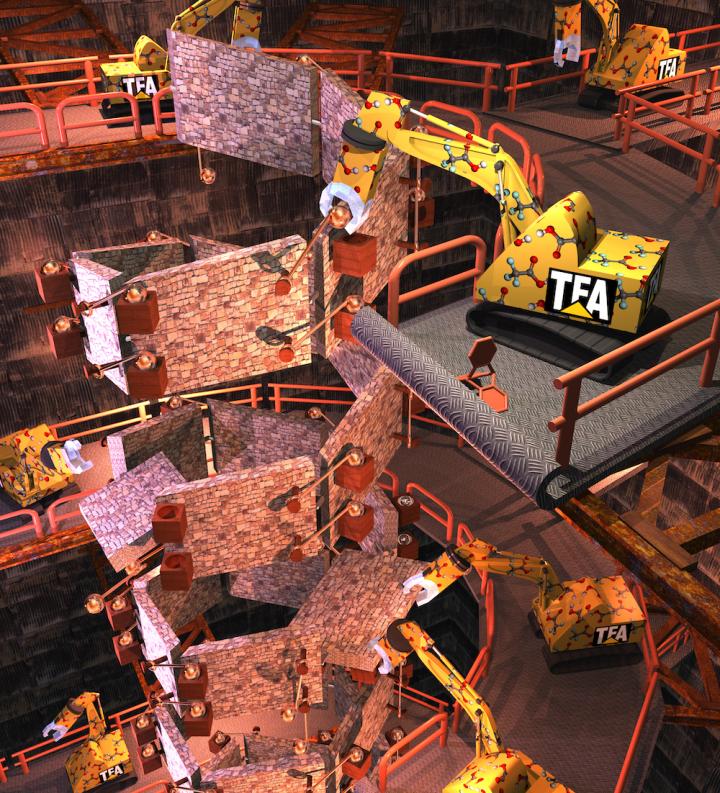Synthesis of helical ladder polymers

A construction of macro-scale architectures with a helical ladder shape is not even a challenge, but it's a different story when it comes to a molecular scale. Here, the efficient synthesis of one-handed helical ladder polymers is established through a trifluoroacetic acid (TFA)-assisted intramolecular cyclization of chiral triptycenes. Credit: Kanazawa University Usage Restrictions: The image may only be used with appropriate caption and credit.
Moreover, most existing strategies for the synthesis of ladder polymers suffer from severe limitations in terms of selectivity and quantitativity. Another important type of molecules are molecules with a helical structure (such as DNA and proteins), which play an important role in molecular recognition and catalysis.
Thus, the fabrication of molecules that possess both a ladder and a helical structure could open up new applications of polymeric materials.
Tomoyuki Ikai, Timothy M. Swager and colleagues from an international collaboration started from triptycene, an aromatic hydrocarbon that is an achiral molecule, but from which chiral derivatives can be obtained by introducing substituents in the benzene rings in an asymmetric manner.
Optically active triptycenes have practical uses as chiral materials, for example for chiral separation and circularly polarized luminescent materials.
The researchers then used the chiral triptycenes as a framework to efficiently form single-handed helical ladder polymers using electrophilic aromatic substitution. Steric repulsion in the system resulted in the formation of one-handed twisted ladder units.
The reactions were quantitative and regioselective (that is, there is a preferred direction of chemical bonding), which enabled the synthesis of optically active ladder polymers with well-defined helical geometry. No byproducts were detected.
Several techniques, including spectroscopy and microscopy techniques, were used to characterize the reaction products during synthesis, and molecular dynamics simulations were employed to understand the structure of the resulting molecules, confirming the right-handed helical ladder geometry. The researchers also measured the optical activity of the molecules.
The newly reported synthesis route will open up the synthesis of nanoscale helical ladder architectures and optically active chiral materials. “We believe that these ladder polymers, which can fall into a new category of helical polymers, represent a promising class of advanced materials for use as nanochannels for molecular/ion transport, organic electronics, specific reaction fields, and functional hosts through further modification of the backbone and pendant units,” commented the authors in the paper.
Media Contact
All latest news from the category: Materials Sciences
Materials management deals with the research, development, manufacturing and processing of raw and industrial materials. Key aspects here are biological and medical issues, which play an increasingly important role in this field.
innovations-report offers in-depth articles related to the development and application of materials and the structure and properties of new materials.
Newest articles

Properties of new materials for microchips
… can now be measured well. Reseachers of Delft University of Technology demonstrated measuring performance properties of ultrathin silicon membranes. Making ever smaller and more powerful chips requires new ultrathin…

Floating solar’s potential
… to support sustainable development by addressing climate, water, and energy goals holistically. A new study published this week in Nature Energy raises the potential for floating solar photovoltaics (FPV)…

Skyrmions move at record speeds
… a step towards the computing of the future. An international research team led by scientists from the CNRS1 has discovered that the magnetic nanobubbles2 known as skyrmions can be…





















